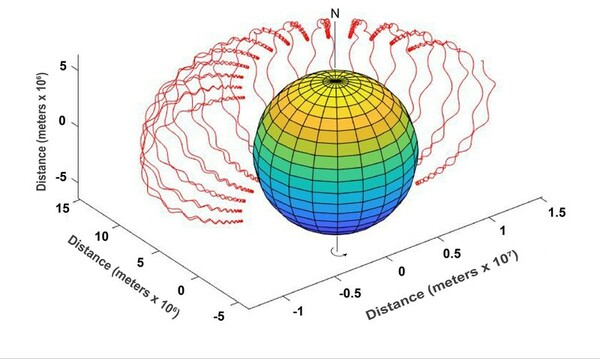Simulation of cosmic rays in the presence of a magnetic field
(1) West Island School, Pok Fu Lam, Hong Kong, People's Republic of China, (2) Department of Physics, Pembroke College, University of Oxford, Oxford, United Kingdom
https://doi.org/10.59720/22-175
Cosmic rays damage microelectronics and have the potential to inflict great damage to life without the protection of the atmosphere and Earth's geomagnetic field (B field), which deflects the bulk of cosmic rays into space. When attempting to understand the observational measurements of cosmic rays, it is paramount to consider the effects magnetism will have on their trajectories. However, an analytical solution of the effects the B field has on cosmic ray trajectories is not possible because the cosmic ray flux is isotropic. We describe a new approach to numerically integrate, using Matrix Laboratory, the motion of cosmic particles deflected by a magnetic dipole field. We hypothesized that the numerical computation of cosmic ray trajectories through a magnetic dipole field, which approximates the Earth's B field, will validate the predictions of cosmic ray trajectories from known observational findings. The results of our study established the effects that the terrestrial magnetic field induces in the motions of these particles, as determined by the Lorentz Force. Overall, the trajectories of cosmic rays are determined by the particle’s energy and its interaction with the Earth’s B field. The high energy particles are curved, while the lower energy particles are either repelled or become trapped in the Earth's B field.
This article has been tagged with: